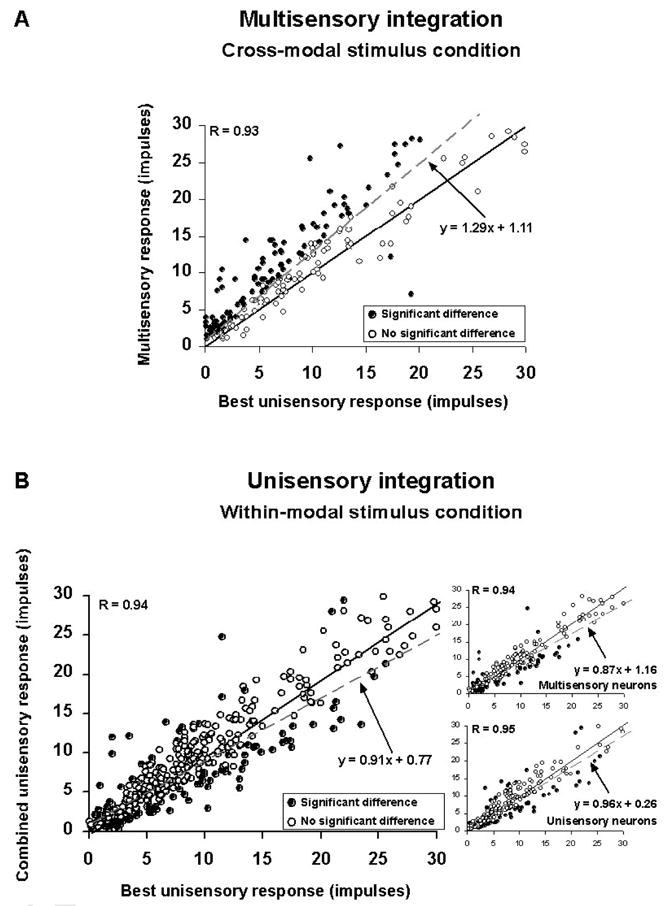Figure 3.

Comparisons between multisensory and unisensory integration in physiology. A: The magnitude of response evoked by a cross-modal stimulus (y-axis) is plotted against the magnitude of the largest response evoked by the component unisensory stimuli when presented alone (x-axis). Most of the observations evidence multisensory enhancement (positive deviation from the solid line of unity). B: The same cannot be said for response magnitudes evoked by two within-modal stimuli. Here, the evoked response is typically not statistically better than the largest evoked by one of the component stimuli individually. This observation is consistent for both multisensory and unisensory neurons (insets on right). From Alvarado et al. 2007b.
